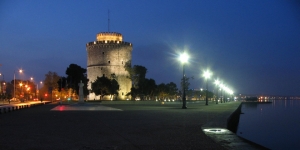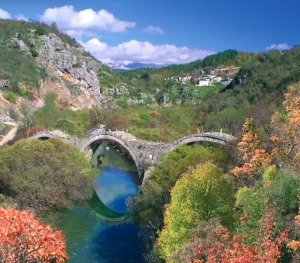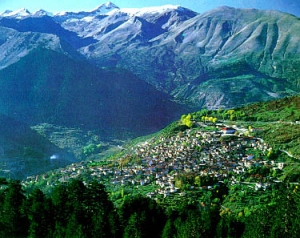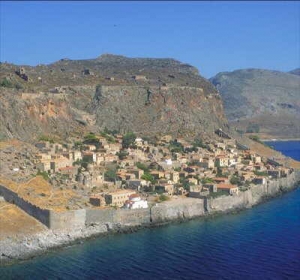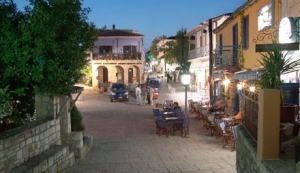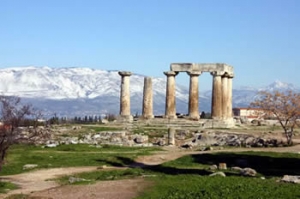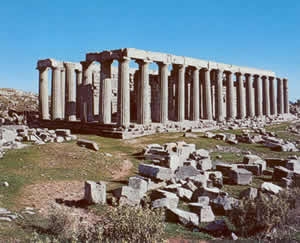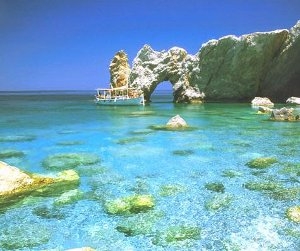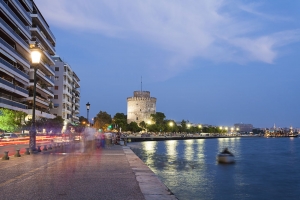LIFE & CULTURE
XpatAthens
Free Things To Do In Thessaloniki
When travelling on a rather strict budget, it’s always nice to be able to visit some interesting places which don’t cost a thing. Thessaloniki is a very interesting city, with plenty of places to check out. If you are passionate about culture, you can visit museums, art galleries and churches for free. And, of course, walking doesn’t cost anything (except your energy).
1. A walk in the Old Town
A walk in the Old Town of Thessaloniki is a history lesson at its best. Formerly surrounded by the Byzantine walls and mainly inhabited by Turks, the Old Town comprised narrow streets, interesting houses, lush gardens and court yards. Although some of the buildings are in ruin now, walking here is an incredible experience.
Walking is, by far, the best way to explore the rest of Thessaloniki as well. Just pack a good pair of walking shoes, make sure to have a map available and have fun!
2. Ataturk Museum
Address: 75, Apostolou Pavlou St.
Opening hours: daily 10 a.m. – 5 p.m.
The founder of modern Turkey, Mustafa Kemal Ataturk, was born in Thessaloniki. The house was given to the Turkish state which decided to turn it into a museum. Most of the furniture found inside is authentic. While the ground floor is not of much interest to the public, the most impressive room is located at the 2nd floor and is the room where Ataturk was born.
3. Church of Agios Dimitrios
Address: 83, Aghiou Dimitriou St.
The Church of Agios Dimitrios is dedicated to Saint Demetrios, the patron of the city. It is the largest church in Greece and a unique experience especially for those not used to the Orthodox Churches.
The first church was build on the very same spot in 313 A.D. but the church we can visit today was completely rebuild in 1948 (true to the original plans).
To read more, please visit www.greecelogue.com
By Christina
Zagori: Villages Hidden Behind Mountains
Zagori is an area of great natural beauty and unique architecture in the Pindus Mountains in Epirus in Northwestern Greece. The area is of about 1,000 square kilometers and contains 46 villages. Zagoria villages are called by Greeks “Zagorochoria” meaning the villages behind the mountain. The Zagori is divided into 3 geographical areas the West, the East and the Central Zagori. The south-Western Side is formed by Mount Mitsikeli (1,810 m).
On the north is Aoos river and the imposing mount Tymfi with its famous Gamilla peak (meaning Camel) and the stunning Lake Drakolimni up there!
The south-Eastern Side runs along the Varda River to Mount Mavrovouni (2,100 m) near Metsovo. It has striking geology and two national parks, one including the river Aoos and the Vikos Gorge, the other around Valia Kalda to the east. That was a brief geographical update but it is about time for me to become highly subjective and describe my trip during Easter time 2011 in the West and Central Zagori. So I took off from Athens with my boyfriend (he was driving thankfully!) and after about 5 hours we arrived in Ioannina which is the largest city in Epirus, famous for its beautiful lake, pies and desserts. We stayed in Grand Serai which is a very beautiful hotel that used to be a Xenia (meaning a state owned hotel) but thankfully it was recently renovated by its new owner Kostas Mitsis. The owner was born in Ioannina and moved at a very early age to Athens to find a job. He now owns about 20 hotels all around Greece. But his love has always been his hometown and his dream to create something there.
Waking up in Ioannina was a peaceful feeling; we had a nice view of the lake from our bedroom and the weather was sunny!! We decided to leave the room and go out for – what else- a pie! So we went to this small place called Select in the city’s centre, on Averof Street which is across the Officers’ Club. The place is exactly the same since the day it opened in the early ‘70s. You don’t go there to relax and enjoy the ambience; you just go there to eat! It is very famous for the baklava dessert. We didn’t have it though, since baklava has a very sweet and syrupy taste to start the day with, it is best enjoyed in the afternoon. We had bougatsa (a type of pie) with cheese and bougatsa with cream, both delicious and enough to keep us full until our final destination Mikro Papigo (meaning Small Papigo) in the West Zagori. We stayed in “Mikro Papigo 1700” which holds its name because of the restored house and 1st building of the complex which dates back to 1700. The owners of the place are very warm people who originate from the area, then moved to Athens and came back to their homeland a few years ago. They really made a big investment in the area but kept everything to its right proportion and with great taste. We just loved the wife’s cooking so most of the evenings we stayed in for dinner. She prepared delicious meat dishes.
I think it was on the 2nd day we decided to take a walk along the Voidomatis River, we were equipped with the right shoes holding the ankle tight so as not to twist on the rocky parts of the path. The walk was actually quite long, 2 hours to go to the traditional arched stone bridge of Kleidonia and another 2 to go back to Aristi where we started. But it was definitely worth every minute of it, we put our feet in the river to rest, we even drank water directly from it (not while having our feet in there!). In the afternoon we decided to go visit the village of Aristi where we checked out another hotel as well, the “Aristi Mountain Resort”, also very beautiful with indoor swimming pool and massage services available. I should not forget to mention that last time I was in Papigo I stayed in Megalo Papigo (Big Papigo) in “Avragonio” hotel owned by Petros and Marouska, also great. Marouska used to make a delicious cake for breakfast. It was voted by Conde Nast Traveller as the best guesthouse complex in Greece in 2010 by the readers.
It was the 4th day we decided to walk again, this time on a more challenging path. We went to the Vikos gorge and reached the Voidomatis springs! The way down is rocky and abrupt and the way up is still rocky and abrupt and uphill as well, so anyone planning to do that should think twice before going down! I must say for myself I am not used to such walks but I did find it challenging and fun after all. A friend of ours suggested we drive to the Central Zagori as well to bring her marmalade from the village of Kapesovo. We passed by Monodendri first, where the path of the Vikos Gorge leading to the Voidomatis river springs begins from. Then we went to Kapesovo to this picturesque little store with traditional products called “Sterna” meaning Cistern, because of the old cistern (13 m. deep, dating back to 1848) that is in the middle of the store, to try these great marmalades for ourselves! There we met Ellie Papagerorgiou, the daughter of the owner Thoukididis who showed us around. Ellie makes all the marmalades herself. My favorite is strawberry and if you like lemon you will love the one she makes. She is a very pretty, modern girl with many dogs and a passion for everything she makes. Her family also owns a beautiful guesthouse named “Thoukididis” after the father. It has only 5 rooms, decorated in Zagorian style, a bit romantic as well due to the 2 daughters and mother that work there as well. In the morning the guests can take part in the different activities of the family, such as collecting wild mushrooms, or distilling tsipouro or hiking.
After this visit the sun was setting, but we wanted to see more and especially this newly built small guesthouse I had read about in a magazine. The place is called “Kipi Suites” and is in Kipi area, on the slopes of Mount Mitsikelli. Maria Klimi, used to run the place, I don’t know if she is still there. Maria is the most hospitable person I met in my visit in the area! She offered us tea, cheese pie; she even gave us Easter eggs she hand painted to take with us. Everything Maria made was with great taste and love. The place is AMAZING. 8 different suites all with fireplaces, comfy sofas, big beds and contemporary design are there for the guests to enjoy. Last, don’t forget to buy lots of mountain tea or any kind of tea. The locals collect it from the mountain slopes and the aromas of the tea are unique as well as the benefits. We got our tea supply for a whole year from this small store in the town of Vikos a retired school teacher has who collects the tea himself with his wife. He also has this amazing honey, he calls the “merenda of the bees”, a combination of honey and hazelnuts you can’t resist!
Author: Faye Leoussis
Discover Metsovo
Metsovo is a town on the mountains of Pindus in Northern Greece. It is a popular winter holiday destination, ski resort and hikers love it in warmer months. Most residents are descendents of Vlach shepherds, a language still widely spoken in the village, and many are involved in the tourist industry. They dress in traditional costume, sell handicrafts and tempt travellers with regional cuisine.
There is a tradition in wood carving and many people make furniture, barrels, beehives, toys, utensils and they decorate churches and altars. It is a pretty little town, built on the ruins of ancient Tymphi and extending along one of Pindus' highest peaks. It is close to the peak of Katara, above the beautiful artificial Lake Aoou.
Its architecture is alpine, in stark contrast to the whitewashed buildings in other parts of Greece. The church of Agia Paraskevi has a carved icon screen and wall mosaics, copies of those at Ravenna.
It is well-known for its cheeses and winemaking. The Katogi vineyard belonging to the Averoff family is the most famous. A museum named Averoff Gallery is dedicated to Georgios Averoff.
Unlike many small towns around the world, there is plenty of work for Metsovo's young people, so the town has a youthful buzz.
On Sundays and feast-days, women wear their embroidered traditional dresses. Old men still have their special places in the main square so they can debate important issues while swinging their worry beads and drinking strong coffee.
To read more, please visit getaway.ninemsn.com
Discover Monemvasia
Monemvasia (Μονεμβάσια) is located in the southeastern Peloponnese in the prefecture of Laconia, 400 meters from land having been separated from the mainland by an earthquake in 375 A.D. Its name is derived from two Greek words, mone and emvassi, meaning "single entrance". It was called Malmsey by old English writers, Napoli de Malvasia by the Venetians and Malvoisie by the French.
Founded by the Byzantines in the sixth century, it shortly after became an important port.
Today a causeway links the mainland town of Yefira/New Monemvasia to Monemvasia or Kastro (castle). The Kastro is divided into a lower and an upper town. Many ruins of the original 800 houses and only four out of the original forty churches can be found in the lower town. Among them is the Church of the Elkomenos Christ (Christ Dragged), which is named after a famous icon of Christ given in 1700 to the church by Andreas Likinios, philosopher and chief physician to the ruler of Moldavia, Dimitirs Kandimir. The oldest church is St. Paul’s, which was built in 956, and today houses the museum. Further on, towards the eastern edge of the lower town and closer to the sea is the whitewashed Our Lady of Hrisafittisa, which was built in the sixteenth century.
High above, castle walls protect the upper town on the summit. There one can see the remains of Byzantine houses and public buildings and a vast cistern that ensured a water supply at times of siege. A fortified zigzag path from the upper town leads to the Fortress of Goulas on the summit overlooking the town. It is entered by a tunnel that still retains its ironbound gates. Among the ruins of houses and cisterns of the acropolis of the upper town stands St. Sophia, a Byzantine church founded by Andronikos II Paleologos on a plan similar to that of Daphni in Athens.
What to see/do - Monemvasia
After breakfast, walk up to the church on the edge of the cliff atop Monemvasia castle and try your hand at throwing a small iron or steel metal object to the sea (it will be drawn in towards the side of the hill, never reaching the sea, due to a magnetic field emanating from the rocks below.
Beaches:
To the north and south of Monemvasia there are beaches 2-3 kilometres from the causeway at Gefyra. Some well liked beaches slightly further away are at Plytra (20 km) and the stretch from Viglafia to Neapoli (35 kilomtres) both of which on on the west side of the peninsula, across from Monemvasia. The island of Elafonisi has some of the more scenic beaches.
Archaeology:
The Richia Museum of Folklore: Richia, about 25 km from Monemvasia in a building of 1875, which was the first school in the village. With farm tools, spinning wheels, clothing and woven items. Monastery of the Annunciation of the Virgin and Agios Georgios of Gerakas near Gerakas village, founded in 19th century.
There are many caves within easy reach:
Kastania - at Kastania Voion (south of Monemvasia before you reach Neapolis).
Vri Cave is north of Monemvasia with a precipice which you can climb down. You can find the entrance on the south west side and there is a lake below with crystal clear water.
How to get there
By car or bus:
Most of the time, like most people, you will drive from another part of the Peloponnese or from Athens or Sparta, but in the summer there are sea routes and sailings, cruises and tours which head for Monemvasia.
By KTEL (long-distance) buses, from Athens and most cities in the Peloponnese.
From Athens to Monemvasia by bus:
There are 3 direct buses at 06:00, 10:00 & 17:15, from the KTEL Lakonias (Bus terminal at Leoforos Kifissou 100, tel. 210-5246805) - journey takes about 4.5 hours. There are more buses via Sparta or Molai.
Tip: From Athens Airport you can take the Express bus line "X93" to the KTEL terminal on Kifissou (line runs 24hrs, with buses every 20-30 minutes).
From Monemvasia to Athens by bus:
One direct bus at 05:15. And with bus change at either Sparta or Molai at 07:15, 14:15, 17:15.
By plane:
Kalamata airport (code: KLX) is about 130 kilometres from Monemvasia - with many choices of which route to take - scenic and mountainous or scenic and even more mountainous! Allow 2.5 hours and more as you will want to enjoy this trip.
Athens airport (code: ATH) to Monemvasia: about 285 km (4.5 to 5 hours).
By sea:
Githio in the south, Patra in the northwest and Piraeus (Athens) are main ports of arrival for a trip to Peloponnese and Monemvasia, between April/May and September ferries to and from the few islands surrounding this region can be most helpful if you are visiting several places.
Source: Monemvasia.com
Mycenae – Fortress of Time
One of the must-sees of the Peloponnese peninsula is the ancient fortress of Mycenae. Once home to Agamemnon and Clytemnestra, this archaeological site launched the "Mycenean Period" where its residents and leaders dominated Greece, Crete, and the islands of the Aegean. It is located about 90 km south-west of Athens, in the north-eastern Peloponnese. Argos is 11 km to the south; Corinth, 48 km to the north.
Dark Aura at Mycenae
Some visitors insist that a sense of evil lingers over Mycenae, even or especially in the harsh glow of the noonday sunshine which beats down on the bare rocks. More likely this is brought on by a touch of dehydration on summer days - Mycenae's tourist facility seems especially prone to run out of bottled water. One possible derivation of the name "Mycenae" comes from Perseus driven to drink water from a mushroom (myces), but this is not recommended for modern visitors.
The grave circles at Mycenae are strangely unnerving. Walking around the deep pit in the narrow curving passageway seems designed to invoke dizziness, a sense of spinning and falling into a vortex of the past. It's easy to believe Clytemnestra plotted murder, or tha Agamemnon sacrificed his daughter Iphigeneia to obtain fair winds.
Heinrich Schliemann and Mycenae
The air of foreboding was catnip to Heinrich Schliemann, who spotted the neglected site and just knew that it concealed great riches. He found it in both in its rich historical connections and in golden treasure, which he excavated from the burial circles. "I have gazed on the face of Agamemnon," he insisted, holding a battered golden face drawn out of the dirt. While the mask found at Mycenae is unlikely to have anything to do with Agamemnon, who lived centuries later than the dating of the site, the seemingly-tranquil, mustachioed golden mask most likely shows us some anonymous pre-Homeric king's face.
The Golden Grave Goods of Mycenae
The goods that accompanied him and others, now on display in Athens at the National Archaeological Museum, were rich and beautiful in a harsh way - a dramatic bull's-head rhyton (drinking vessel), a golden one of a lion's head, a bronze dagger inlaid with gold, and bright, though delicate, gold adornments which assemble into a crown-like image.
While most of the Mycenean gold will stay at the National Archaeological Museum, visitors to Mycenae itself now have a bonus: a new museum on-site displaying some of the thousands of other artifacts found there. Mycenae, so rich in its history, now can be seen in a more complete context, making this must-see site even better.
The "Lions" of Mycenae
The two felines are actually lionesses comprising the triangular lion gate, one of the most recognizable icons of world architecture, still seem to be roaring in unison, probably announcing the unexpected approach of so many ill-armed visitors. Or is that video camera a weapon?
Above and Beyond Mycenae
The acropolis and its ruined walls above the circle graves and beyond the lion gate are intriguing and the extra climb provides an improved view, though visitors on hot days may want to give it a pass. The treasury of Atreus is a better bet - your admission to Mycenae covers visiting this unusual beehive tomb just outside Mycenae, which can be a cool relief on hot days.
Mycenae Travel Tips
Good soles on your shoes are especially necessary for this site - the long marble-paved ramp leading to the Lion Gate was meant to knock attackers off their feet, and, like the choklakia pavings of the Dodecanese islands, still works on modern marauders. For the same reason, this particular site is challenging for those who are not sure on their feet - though persons using canes may actually be better off than those without! I remember an unexpected moment of rest when I tripped backwards while videotaping the Lion Gate, luckily landing on a seat-sized rock just behind me.
A day's trip to Mycenae can be combined with a visit to Epidaurus or Corinth or, for the intrepid and well-organized, all three.
Source: Go Greece About
Afitos Village In Chalkidiki
It is a place endowed with a lot of natural beauty. Visitors can enjoy the superb sea, with the most clear and warm waters in the Mediterranean Sea and the small sandy seashores which are pleasantly decorated with small rocks coming out of the water. The place is of great historical and environmental significance because we find here the ancient millstone quarries, as well as important biotopes where most fish species come to spawn. Here, the visitor can also see the primitive nature of Chalkidiki, where the native pine trees water their roots in the waters of the Toroneos gulf.
However, the most amazing sight of all is the awe-inspiring traditional village of Afitos with its 28 century-long history. Resisting the unorganized tourist housing development and in order to maintain their cultural inheritance pure, the inhabitants of Athitos have been trying to develop their place through their culture by promoting the natural beauty as well as the traditional village and the ancient history of their place. So, the old houses of porous stone have been renovated, the streets have been paved and the place now imposes its dignified beauty on visitors and on the locals making Athitos an amazing place to visit.
Afitos has many taverns, bars and cafes that serve local delicacies and refreshing cocktails from morning to late at night, while accommodation is abundant since Afitos offers plenty of hotels, rooms for rent and apartments.
To read more, please visit chalkidiki.com
Seven Things To Do In Ancient Corinth
Forty- eight miles west of the great city of Athens, Ancient Corinth, one of Greece’s richest cities, stood as a radiant beacon on the narrow isthmus connecting the Peloponnesian peninsula to the mainland of Greece. A cultural and commercial center, as well as a naval power, Corinth enjoyed a commanding presence in the ancient world, owed largely to its strategic positioning.
It had two ports, one on the eastern side of the isthmus (Lecheon) for trade with European and Northern African merchants from throughout the Mediterranean. The other stood on the western edge (Kenchreai) for trade with Aegean, Persian, and Egyptian traders.
Every second spring witnessed the Isthmian Games in honor of the Earthshaker, Lord Poseidon, Greek god of the sea. In the mythical tales of Caenus, crown prince of ancient Iolkos, as recounted in the novel Caenus and The Quiver of Artemis, Caenus sets out to prove his worth at the fictional Apollo’s Tournament in Corinth, a city that was as famous as it was infamous. While at the tournament, Caenus meets a local peasant girl named Adriande, who takes Caenus on a tour of some of the very sights I mention below.
Following are Seven Things To Do In Ancient Corinth:
1. Visit The Doric Temple Of Apollo: Apollo, one of the twelve Olympians, was the Greek god of light, truth, prophecy and archery. He shared his penchant for archery with his twin sister Artemis, whose poison-tipped arrows could kill immediately. Built on a hill overlooking the agora marketplace, the Temple of Apollo displayed exquisite craftsmanship. It included 38 Doric columns and inspired all who saw it. Strike up the lyre.
2. Stroll Through The Agora: The agora was an ancient marketplace. Surrounded by colonnades and stoas (covered walkways), the agora served as the hub of the city's political and economic life. There were shops, museums, temples, and administrative buildings. Near the agora was the Elephant’s Tusk, a local taverna where Caenus meets a local peasant girl named Adriande, whom he later falls for.
3. Climb To The Top Of The Acrocorinth: The Acrocorinth was a monolithic rock, a veritable castle fortress overlooking the city. With its secure water supply, Acrocorinth was used as the last line of defense in southern Greece, repelling foes from entry into the Peloponnesian peninsula. Legend held that, Pegasus came here to drink from a spring. The climb is definitely worth the effort. The view of both of the city’s ports is simply breathtaking.
4. Walk The Diolkos: The diolkos (Greek for "haul across"), was a stone-paved roadway that connected the Saronic Gulf with the Gulf of Corinth, effectively linking Corinth’s two ports. This overland route was highly valuable in that it allowed merchants, passengers and cargo to avoid the difficult and time-consuming trip around the southern end of the Peloponnesian peninsula. Walk a mile in the sandal prints of these ancient traders.
5. Join The Cult of Aphrodite, Attend Her Festival, Aphrodisia: Ahh, Aphrodite… The Greek goddess of love and beauty was worshipped widely. Women wanted to be her. Men wanted to be with her. The Temple of Aphrodite, at the summit of the Acrocorinth, was the site for the most active festival honoring the goddess: Aphrodisia. During this festival the Cult of Aphrodite was quite active, engaging in ritualized prostitution… all in the name of the goddess, of course. This festival was not for the faint of heart.
6. Drink From The Sacred Spring At The Fountain of Peirene: Near the north-west end of the agora was the large public Fountain of Peirene, a marvel in marble. Within, there were chambers through which the water flowed into an open pool. Seven steps led downward to the sacred spring where priests were said to consult with Apollo.
7. Attend Apollo’s Tournament: Every year the summer solstice launched the Festival of the Sun in Corinth. The prestigious Apollo’s Tournament, was the main attraction. Based upon the Isthmian Games, Apollo's Tourney was a grueling contest of skill and might, pitting princes and noble sons against one another in such competitions as bull riding, endurance running, wrestling, and sword fighting. In Caenus and the Quiver of Artemis, Caenus and his nemesis Makedon are guided by the hands of the gods toward an epic showdown in the final stage of the tournament.
Source: C.S. Ledbetter
Temple Of Apollo At Bassae
The magnificent ancient temple visible today was not the first to stand on this rugged mountain site. Excavations have shown that the foundations of the Temple of Apollo reused blocks from at least one Archaic predecessor. Artifacts from the 7th, 6th, and 5th centuries have been discovered, including some terracotta decoration. Votive offerings of many periods have also been uncovered, dating all the way back to Geometric times.
History
The present Temple of Apollo Epicurius was built sometime between 450 and 400 BC, around the time of the Parthenon in Athens. Its style seems to indicate a date prior to the Parthenon, perhaps designed 450-440 BC with a completion date around 425 BC. (Other sources date it to shortly after the Parthenon.) The ancient writer Pausanius attributed the design to Iktinos, architect of the Parthenon, but so far this has not been independently confirmed.
The temple's isolated location and unusual dedication (epikourios means "helper" or "protector") have kept scholars occupied for over 200 years. One explanation is that the villagers of nearby Figalos prayed to Apollo for protection from a plague and built the temple in gratitude for his assistance. Another theory is that Apollo was considered the protector of the Arcadians, especially mercenaries, who funded the temple.
Whatever the reason for its construction, the Temple of Apollo Epicurius was no modest, back-woods shrine. It is built on a grand scale with great precision and architectural creativity. Its combination of Doric and Ionic orders in a single structure was quite daring, and its Corinthian capital is the oldest known example in the ancient world.
The temple at Bassae remained well-preserved over the centuries, thanks primarily to its isolation. All but forgotten, it was too far up in the mountains for looting of materials to be practical anyway. The ancient ruin was not rediscovered until 1765, when the French architect Joachim Bocher stumbled on it by accident.
In 1811-12, British and German antiquarians poked around the ruins a bit and brought the metope sculptures back to their own countries. The cella friezes were bought by the British Government for £19,000 and placed in the British Museum, where they remain today.
The Greek Archaeological Society restored the temple from 1902 to 1906, re-erecting some fallen columns and restoring the cella walls. Another renovation was carried out in the 1960s, during which some fragments of the frieze were excavated.
A "temporary" protective tent was erected over the temple in 1987 that still remains in place today. It keeps out the extremes of the mountain weather, but obscures much of the architectural beauty of this celebrated Classical temple.
To get there
• Address: Off Rte. 76 and then up a 1-lane road, Bassae, 27061
• Phone: 26260/22254
• Cost: €2
• Hours: Daily 8:30-3
Source: Sacred-destinations.com
Skiathos
Skiáthos, the most cosmopolitan island in the Northern Sporades, is truly a paradise on earth, with lush pine forests and crystal-clear azure waters. Despite the rapid growth in tourism here in recent decades, it the island is still picturesque and unspoilt and blessed with more than 60 beautifully clean beaches.
The most famous is Koukounariés, which has been declared the third most beautiful beach in the Mediterranean. When you add in its bustling nightlife, it is only natural that the island attracts thousands of young visitors every year!
Whether you want to hide yourself away from the crowds or dance until you drop – and then wake up and do it all over again –, Skiáthos, with its delirious night life, is a real treat for visitors and especially for young people seeking the freedom to ignore conventions and party on to the frenetic beats of their favourite music! The pedestrianised street by the Old Harbour is the ultimate hotspot for entertainment! Buzzing bars and clubs keep youngsters rocking through the night and until the early morning! The party continues in the area of Ammoudiá (on the road to the airport) where entertainment addicts celebrate in big open air clubs! Colourful cultural events, concerts and art exhibitions held throughout summer add a special touch to holidays on the island!
To read more, please visit visitgreece.gr
Instant Weekend: Thessaloniki
Why go now? Thessaloniki comes into its own during the winter months. Indeed, as its proud inhabitants claim, it beats Athens hands down as a lively off-season destination. It may not have the Acropolis but it does have an absorbing range of ancient sights that are eminently walkable thanks to the city's manageable size. Add in some mouthwatering menus and the seemingly never-ending nightlife options and you have a real surprise package.
You may even get to toast the gods on Mount Olympus, visible from the seafront on a clear day.
Checking in
On the edge of the trendy Ladadika district, the city's only boutique hotel, the Capsis Bristol (00 30 2310 506500; capsisbristol.gr) has a range of rooms tastefully decorated in period style, with doubles from around €160. There is a gourmet restaurant and a classy first-floor terrace to boot. Further inland towards the Ano Poli (Upper Town), the Tobacco Hotel (00 30 2310 515002; davitel.gr) has nearly 60 more modern rooms largely in marble and wood; from around €90. The hotel's name reflects the fact that it was converted from one of the area's many tobacco warehouses. Budget options abound on and around the central thoroughfare of Egnatias Street - at the simple Hotel Bill (Syngrou 29; 00 30 2310 537666) , the, er, hotel bill is unlikely to be much more than €30.
Hit the streets
Thessaloniki's prime strolling arena is the central seafront esplanade, bookended by the workaday port and the city's trademark symbol, the White Tower. The tower was originally part of the Byzantine town's defences. Along the front you'll see the city's chic and famously attractive youngsters parading their designer gear and sharp haircuts during the evening volta (stroll). Drink in some of the venerable ancient heritage by admiring imposing structures such as the Arch of Galerius and the Rotunda, both built in the third century AD and situated next to each other just off Egnatias Street. Nearby Ayia Sofia heads an impressive list of Byzantine churches, while the Archaeological Museum (€6; Platia Hanth, just inland from the White Tower) is the place to gaze in awe at the wealth of gold from the Macedon Tombs at Vergina - and that's only part of it. More cutting-edge exhibitions are to be found at two separate portside museums: of Photography and Contemporary Art (entrance free; housed in converted warehouses off Koundouriotou Street).
Coffee break
Greeks love lingering over their coffee and countless cafes line the seafront, the adjoining central square, Platia Aristotelous, and just about every other street corner in the city. For a fine frappé or freddo in the whimsical company of psychedelically lit mini garden gnomes and other figurines, head for Pasta Flora Darling (Zefxidou 6). You should also try the creamy sweet kazan dipi, an eastern version of crème brûlée and a legacy of the Ottoman occupation, available at any zacharoplastio (patisserie).
Nick Edwards is the author of the Rough Guide to Greece (see roughguides.com)
To read more, please visit theguardian.com

